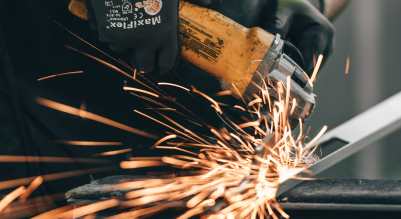- Types of processing: laser surfacing
- Machined materials: metals
- Advantages: compact coating structure, short processing time, small heat affected zone, high precision
- Industries: aerospace, automotive, tool and mold making



Laser surfacing is a processing technique that allows regenerating or modifying the physical and chemical properties of surfaces. This makes it possible to extend the life of damaged or worn-out machine parts, increase their durability by improving their resistance to abrasion, corrosion or impact loads. Among the advantages of laser surfacing are the compact structure of the applied coating, short processing time, small heat affected zone and high precision. In addition, the process can be repeated many times to obtain multiple layers with different parameters.
As a result of the laser beam falling on the surface, a liquid pool is melted and formed, into which the partially melted supplementary material enters. The supplementary substance, which is most often a powdered metal (although it can also be a wire or a previously applied metallic paste), is fed into the working area by means of an external nozzle or, thanks to the special design of the laser head, coaxially to the laser beam axis. Due to crystallization, a permanent bond is formed between the introduced elements and the base material.
The main application areas for laser surfacing are the aerospace and automotive industries, but the technique is also used in tool and mold making processes.
Photo gallery
We offer laser welding and surfacing heads from Precitec – find them here.
